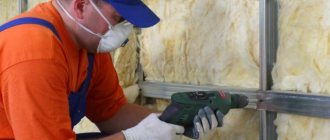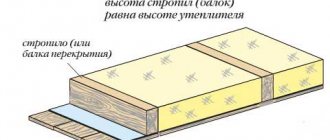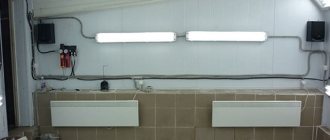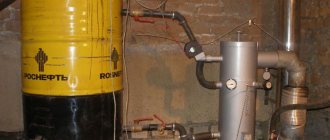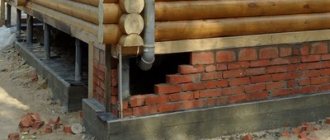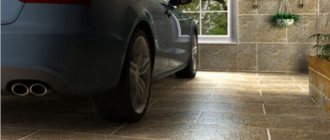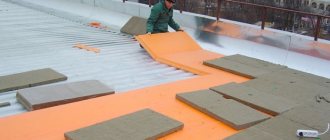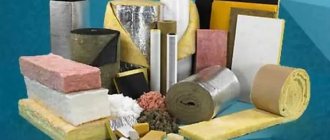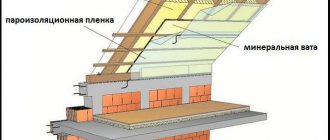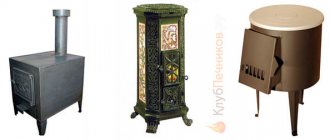It is advisable to maintain an optimal microclimate in the garage. If you can properly insulate a building, you will significantly reduce heating costs, while the conditions will be quite comfortable for work, technical inspection and car repairs. For example, in unstable weather with average temperature values, in spring and autumn, you will not need to worry about heating at all, and in the cold winter, energy consumption will be significantly less. The optimal solution is to insulate the garage from the inside with polystyrene foam. This method is quite popular and trusted even by experienced car enthusiasts.
The secret of polystyrene foam is its cost-effectiveness and high efficiency as insulation. At the same time, you can also save on construction work, since the garage owners will be able to handle the installation of such a layer of insulation on their own. Today we will learn in more detail how to insulate a garage with polystyrene foam, how best to work with the material, and how its varieties differ from each other.
The importance of climate in the garage
Creating optimal conditions in the garage is of great importance. For example, if it is extremely cold and the surfaces are not insulated, the gate may become covered with a large layer of frost. To improve conditions, it is necessary to insulate walls and gates, and not close the ventilation. After all, it is thanks to the ventilation holes that excess moisture leaves the room, preventing the formation of condensation and metal corrosion.
Experts note that it is advisable to maintain a temperature in the garage of at least five degrees Celsius. At the same time, ventilation must also be ensured.
Why foam plastic? Material advantages
What is the reason for the high popularity of this material? Why do many forward-thinking car enthusiasts choose to insulate their garage with polystyrene foam? Let's consider the key advantages of the material.
- Polystyrene foam is a fairly economical insulation material. In terms of price-quality ratio, it is superior to many other materials. For example, it outperformed mineral wool by 50%.
- It is quite convenient during the installation process. Even a person without builder skills will be able to cope with sheathing a garage with foam sheets.
- In terms of its properties, the material in many ways not only resembles the popular mineral wool, but also surpasses it.
- The water resistance of this type of insulation plays an important role, since it is in the garage that there is a high probability of increased humidity, but this must be dealt with. After all, condensation is very dangerous for the machine and its metal parts. Just with polystyrene foam you can prevent corrosion.
Some people are confused by the fact that polystyrene foam is still a flammable material. And the garage almost always contains fuel and lubricants. But here the solution is very simple. Now they produce special brands of this insulation, which already contain fire retardants. Such additives provide attenuation and allow achieving the required level of fire safety.
Restoring air circulation
Cheap air recuperator.
has both positive and negative consequences. The positive aspects are obvious - it becomes warm, the car is easy to start in the morning. The negative aspects include the lack of air circulation. Logically, heat preservation is required in the cold season, that is, in winter. In winter there is a lot of snow, which sticks to the car wherever possible.
When the vehicle warms up in the garage, the snow will also melt, increasing the humidity in the room. And, as you know, high humidity, heat and lack of air circulation cause fungus to appear. In addition, high humidity, caused by the thermal insulation of the garage from the inside, negatively affects the car body. It begins to rust, the effect is enhanced by the salt that is scattered all over the roads. How to make it so that:
- the room was warm;
- there was a constant flow of fresh air.
As an option, you need to insert an air recuperator into the air window, which has long been sealed and sealed. There are units for 3 thousand rubles, which are built into a hole in the wall. In this case, it’s simply an ideal option. The device is connected to the network and works constantly without turning off. It takes heat from the exhaust air and transfers it to the supply air. An article about air recuperators will help you study this issue in more detail. One of the options for how to insulate a garage from the inside is clearly shown in the video:
Types of foam
We will try to learn more about the material and its types, their technical features, advantages and disadvantages, and differences. When thinking about insulating a garage with polystyrene foam, it is important to choose the most suitable type of material. The characteristics of the varieties mainly depend on the category of polymer, because it is the basic component of the insulating material.
Expanded polystyrene
The most popular, widely in demand type of foam is expanded polystyrene. It is quite often used for thermal insulation of garages inside and outside. Expanded polystyrene can be extruded, non-pressed and pressed.
When it comes to insulating a garage space, which has special requirements for the level of fire safety, it is advisable to choose the PSB-S brand. This material does not support combustion, is resistant to elevated temperatures, and contains effective flame retardants. In addition, this material is safe from an environmental point of view and does not release toxic substances into the environment.
Let us outline the key advantages of expanded polystyrene.
- The material is resistant to the negative effects of chemicals and aggressive environments.
- The insulation is not afraid of insects and fungus.
- Affordable cost is of great importance.
- It is easy to process polystyrene foam.
- The level of thermal conductivity is minimal.
- Has good sound insulation properties.
- It has good resistance to humidity, steam, and practically does not allow water to pass through.
When polystyrene foam is produced conscientiously, it is virtually non-toxic.
Penoizol
More modern building materials include penoizol. Nowadays it is better known as liquid foam. Its properties differ from the usual plates of thermal insulation material, since it is customary to manufacture it directly on the construction site. For this purpose, special foam generators are used. When the insulation mixture is whipped, it is filled with the prepared cavities. Then the material hardens. You can make briquettes in advance if you first pour the mixture into prepared forms.
Unfortunately, from an economic point of view, some difficulties may arise with such material, since it can hardly be called budgetary. You will have to competently mix the composition in compliance with the technology and use special equipment. And this will require additional investments.
However, the advantages of penoizol are significant.
- Liquid foam guarantees a high level of thermal insulation. It is this material that has the maximum heat resistance among other types of foam.
- The minimum service life of insulation is, according to conservative estimates, 40 years.
- Complete environmental safety is of particular importance.
- The material will ensure fire safety without additional investment, since it does not support combustion.
- Penoizol has increased resistance to biological and chemical negative influences.
- This insulation allows you to maintain a good microclimate in the room due to optimal moisture permeability.
Note! It is necessary to purchase penoizol from reliable, well-established suppliers in the construction market, since this effective material is often counterfeited, violating the technology in the process of underground production.
Polyurethane foam
This is the material with the largest number of pores. It is famous for its unique adhesion. Typically, polyurethane foam is sprayed directly onto the walls.
Here are the important advantages of polyurethane foam.
- The thermal insulation layer is continuous and seamless.
- The space is used rationally, since this thermal insulation material takes up minimal space.
- The service life is at least 70 years.
- The material is non-toxic and attracts with its environmental cleanliness.
- It retains its properties even with sudden temperature changes.
- Has increased resistance to mechanical stress.
The main disadvantage is the need to use special equipment to apply the material.
Important little things
Insulated metal gates in a garage are a whole complex of measures and it does not end only with the arrangement of the inner surface of the doors
It is equally important to correctly install the seal around the perimeter of the sashes, plus take into account the accompanying factors that reduce heat loss.
- Let's start with the fact that when you order or choose a door for your garage, do not skimp and take a model that has a simple door . If you constantly open a whole sash, then as soon as your neighbor comes to you several times in the winter for advice, all your warmth will disappear. After all, no matter how hard you try, you won’t be able to squeeze through quickly, the open door is too big;
Doors with and without entrance doors.
- Now about compaction . It is clear that with such large dimensions it is unlikely that the shutters will fit tightly along the entire perimeter of contact with the frame of the opening. You should immediately forget about such things as self-adhesive seals for windows and ordinary doors; they will last a maximum of a week. Rubber hoses with fastening tape are produced for garage doors and other similar structures. They can be hollow or filled with some soft porous material such as foam rubber. Such a seal is fixed to the base with self-tapping screws using mounting strips or comes with the strip;
Types of rubber seals for garage doors.
- It would also be a good idea to install a curtain on the inside next to the gate.. There are several options here:
- A thermal curtain that works on the principle of a fan heater and cuts off cold air at the inlet is certainly a good thing. But, firstly, such a unit itself is quite expensive. And secondly, the power of such a garage curtain starts from 2 - 3 kW, respectively, such pleasure will cost a tidy sum;
Thermal curtain.
- The next option is more loyal. A piece of tarpaulin with water-repellent impregnation is used as a curtain. In fact, this is a classic curtain. You need to stretch a metal string or baguette on top and hang your sliding canvas curtains on it;
Canvas curtains over the gates.
- Almost every motorist has been to a car wash; remember how their driveway is equipped. The curtain there is made of vertically cut soft transparent tapes, such as polyethylene. But this is not entirely polyethylene, and if you buy such a thing in a factory version, it will be expensive. It is unlikely that your garage will have the same amount of traffic as a car wash. Therefore, you can simply cut strips of thick technical polyethylene about 10 - 20 cm wide and, with a slight overlap (10 - 15 mm), staple them to a wooden strip. Next, for reliability, screw another similar rail on top, so that the polyethylene is between them, and fasten it above the entrance to the garage. Please note that any curtain should not drag on the floor; a small gap is always left;
Polyethylene curtain.
- I would also like to say a few words about lining the gate from the inside . Izolon and lining, as you understand, are far from the only materials that can be used for such purposes. One of the most popular in garage design is OSB-3 or OSB-4, about 10 mm thick; it has decent moisture resistance and can be bought for reasonable money. If you take plywood, then in this case you need to buy the FSF brand. For those who like a warmer design, we can advise covering the inside of the doors with PVC panels. They are glued directly onto the foam plastic with liquid nails or something similar, and a edging is put on around the perimeter;
Standard OSB board.
- There is one more interesting detail. I've seen advice online about insulating gates with polyurethane foam. People say that you can buy 5 - 7 cans of foam, make a frame and fill it with this foam . They promise that such insulation can supposedly last for almost 50 years. But in the open air and with minor vibration, I have seen polyurethane foam deteriorate within 3 to 5 years. Perhaps the person used some special type of foam, but in any case, I do not recommend this method to you.
Polyurethane foam and blowing gun.
Preparing the work surface
Do you have a brick garage? Then polystyrene foam will fit just perfectly. It will prevent weathering of the seams, extend the life of the walls, improve sound insulation and minimize heat loss. For garage spaces made from other building materials, foam is also perfect.
Before insulation, all working surfaces must be prepared. Walls, ceilings, gates must be cleaned of dust, dirt, and old plaster. The base under the insulation layer must be clean and durable. Then the foam will be able to be fixed well. All cracks and chips must be covered with a layer of plaster to achieve a smooth surface.
We install polystyrene foam
When insulating garage walls from the inside with polystyrene foam, it is important to pay special attention to the installation of the material. The thermal insulation properties, as well as the service life of the coating, will largely depend on this.
When walls made of concrete or brick are insulated, 25-density foam plastic with a thickness of 10 cm is usually used. Two layers of 5 cm can be applied. Longitudinal and transverse seams are tied.
Here is an approximate working algorithm. If necessary, it can be slightly changed and improved.
- Pre-prime the surface to improve adhesion to the adhesive.
- Apply glue in medium-sized “blobs”. You can use a notched trowel.
- The sheets are pressed tightly enough.
- Cover the wall from bottom to top.
- Lay the insulation sheets in a checkerboard pattern.
- Use strips secured with dowels to the surface.
- The masonry elements are additionally secured with plastic dowels when the adhesive composition has completely hardened.
In general, installation is quite simple. The main thing is to be careful and do everything more carefully so that the insulation layer is continuous.
Garage roof insulation
The roof of the garage must also be insulated. Unfortunately, many car enthusiasts forget about this. They prefer to make a kind of box out of thermal insulation material, and leave the roof without attention. As a result, the required temperature regime can no longer be achieved.
Here are some useful tips.
- If you are insulating the ceiling in a garage using foam plastic, you should not drill holes for the bars. It's better to use glue.
- When the roof consists of reinforced concrete slabs, it is advisable to take care of external and internal insulation.
- If you apply foam plastic from the outside, you will have to additionally make a plaster screed. The optimal solution is to lay a waterproofing layer between the insulation and the plaster. You can use roofing felt or film.
- Is the sheathing loose? Then fix the layers of insulation between the rafters. After this, you can use a waterproofing film.
- Do you have a continuous sheathing or a good rafter system? In this case, waterproofing is laid on top, and the insulation is fixed under the sheathing.
- Waterproofing film requires careful attention. Make sure that it does not come into direct contact with the insulating layer if it has reduced vapor permeability.
The best scheme for insulating a garage roof is: waterproofing - thermal insulation - vapor barrier.
We insulate garage doors
It is very important to properly insulate your garage door. Then there will be no problems with their freezing or the formation of cold bridges. It is also advisable to provide a small door at the gate. This will significantly improve energy efficiency, since it is impractical to send such a wide flow of cold air into the garage every time.
Remember the most important points.
- First of all, prevent the flow of cold air through the cracks. All air gaps are eliminated. The joints can be removed using rubber seals and self-adhesive tape.
- Ventilation is of great importance. Excess moisture must be eliminated so that condensation does not form, leading to metal corrosion. Good air circulation will eliminate all problems. Please note: the ventilation openings must have special protective nets that will become a reliable barrier for insects, rodents and birds.
- If you insulate the gate with foam plastic, you should take additional care of aesthetics. For example, use lining or plastic panels as facing materials.
Good insulation of garage doors will prevent temperature changes and eliminate the possibility of cold bridges forming. This is especially important in winter, when the air temperature is extremely low and the gates are so frozen that it is even difficult to open them.
Which gates need insulation?
Most often, garage doors are made in the form of a swing structure that needs to be insulated. A corner or profile pipes are used as the gate frame, to which a sheet of metal is attached. Since steel conducts heat very well, the lack of thermal insulation does not in any way prevent it from leaking out of the garage. Sometimes swing gates are equipped with a wicket gate, which significantly reduces heat loss if the garage is often opened and closed.
Today, the most common gate designs are overhead and sectional. The canvas is made of sheet metal on the outside and foamed polyurethane on the inside. Such a design is already equipped with the necessary thermal insulation from the factory and is able to effectively retain heat.
We recommend: Insulating a wooden house with mineral wool from the outside under siding - step-by-step instructions
Sometimes up and over gates are made independently. This design, like the swing one, does not have any insulation, since the material is bare metal. If the garage is equipped with roller gates, then their design simply does not allow for insulation.

